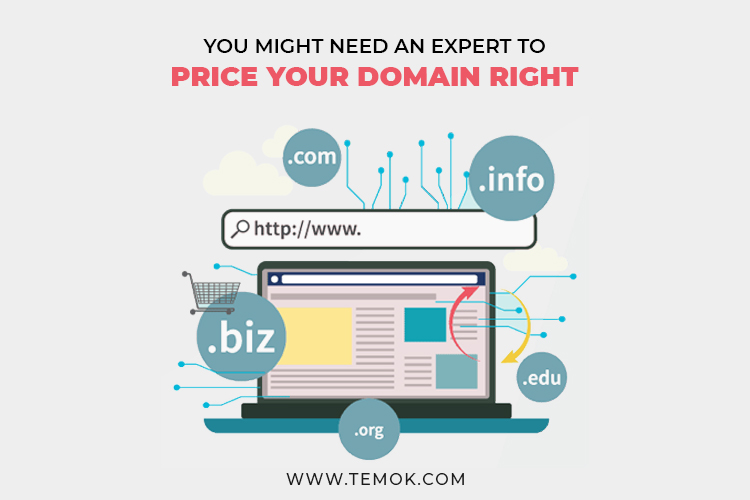Why Selling Your Domain Can Be a Lucrative Opportunity
The demand for premium domains has been on the rise in recent years, driven by the growing importance of online presence for businesses and individuals alike. A well-chosen domain can be a key factor in a company’s online success, serving as a unique identifier and a vital part of its brand identity. As a result, selling a valuable domain can be a lucrative opportunity for those who have invested in this digital real estate. In fact, some domains have sold for millions of dollars, making them a highly sought-after commodity in the online market.
For those looking to capitalize on this trend, understanding how to sell your domain is crucial. It requires a combination of research, strategy, and negotiation skills to secure the best possible price. By leveraging the right sales platforms, creating a compelling sales pitch, and navigating the technical and administrative aspects of the transfer process, sellers can maximize their return on investment and achieve a successful sale.
The process of selling a domain can be complex, but it can also be highly rewarding. With the right approach, sellers can tap into the growing demand for premium domains and secure a significant profit. Whether you’re a seasoned domain investor or just starting out, understanding the ins and outs of the domain sales market is essential for success. By following the right strategies and best practices, you can unlock the full potential of your domain and achieve a lucrative sale.
In the world of online real estate, domains are a highly valuable commodity. They serve as the foundation of a website’s identity and play a critical role in search engine optimization (SEO). As a result, companies and individuals are willing to pay top dollar for domains that are short, memorable, and relevant to their brand. By understanding the factors that drive domain value and leveraging the right sales strategies, sellers can capitalize on this trend and achieve a significant profit.
So, how do you sell your domain and maximize your return? The key is to approach the process with a clear understanding of the market, a well-researched sales strategy, and a willingness to negotiate. By following these principles and staying focused on your goals, you can unlock the full potential of your domain and achieve a lucrative sale.
Preparing Your Domain for Sale: Tips and Strategies
Before listing your domain for sale, it’s essential to prepare it for the market. This involves researching the market value of your domain, gathering relevant data and statistics, and creating a compelling sales pitch. By taking these steps, you can increase the visibility and appeal of your domain, attracting potential buyers and maximizing your return on investment.
Researching the market value of your domain is a critical step in the preparation process. This involves analyzing the sales data of similar domains, identifying trends and patterns in the market, and determining a fair and competitive price for your domain. You can use online tools and appraisal services to help you determine the value of your domain, such as domain appraisal websites and market research reports.
In addition to researching the market value of your domain, it’s also important to gather relevant data and statistics. This can include information about the domain’s traffic, revenue, and search engine rankings, as well as any relevant industry trends or news. By gathering this data, you can create a comprehensive and compelling sales pitch that showcases the value and potential of your domain.
Creating a compelling sales pitch is a crucial step in the domain sales process. This involves highlighting the unique features and benefits of your domain, showcasing its potential for growth and development, and addressing any potential concerns or questions that buyers may have. By creating a clear and persuasive sales pitch, you can increase the appeal and visibility of your domain, attracting potential buyers and maximizing your return on investment.
When creating your sales pitch, be sure to include relevant information about the domain’s history, traffic, and revenue. You should also highlight any unique features or benefits of the domain, such as its keyword relevance, brandability, or search engine rankings. By showcasing the value and potential of your domain, you can create a compelling sales pitch that attracts potential buyers and drives sales.
By following these tips and strategies, you can prepare your domain for sale and increase its visibility and appeal in the market. Remember to research the market value of your domain, gather relevant data and statistics, and create a compelling sales pitch that showcases the value and potential of your domain. With the right preparation and strategy, you can maximize your return on investment and achieve a successful sale.
Understanding Your Domain’s Value: A Comprehensive Guide
When it comes to selling a domain, understanding its value is crucial. The value of a domain is determined by a combination of factors, including its length, extension, keyword relevance, and market demand. By understanding these factors, you can determine a fair market value for your domain and increase its appeal to potential buyers.
One of the most important factors in determining a domain’s value is its length. Shorter domains are generally more valuable than longer ones, as they are easier to remember and type. Additionally, domains with popular extensions such as .com, .net, and .org are typically more valuable than those with less popular extensions.
Keyword relevance is also a critical factor in determining a domain’s value. Domains that contain relevant keywords can be highly valuable, as they can help businesses and individuals establish a strong online presence. For example, a domain that contains a popular keyword related to a specific industry or niche can be highly sought after by businesses and individuals in that industry.
Market demand is another important factor in determining a domain’s value. Domains that are in high demand, such as those related to popular industries or trends, can be highly valuable. Additionally, domains that have a strong brand identity or are associated with a well-known business or individual can also be highly valuable.
To determine the value of your domain, you can use online tools and appraisal services. These tools can provide you with an estimate of your domain’s value based on its length, extension, keyword relevance, and market demand. Additionally, you can research the sales data of similar domains to determine a fair market value.
Some popular online tools and appraisal services for determining domain value include domain appraisal websites, market research reports, and online forums. These resources can provide you with valuable insights and information to help you determine the value of your domain.
By understanding the factors that determine a domain’s value and using online tools and appraisal services, you can determine a fair market value for your domain and increase its appeal to potential buyers. This can help you sell your domain for a higher price and achieve a successful transaction.
Choosing the Right Sales Platform: Options and Considerations
When it comes to selling a domain, choosing the right sales platform is crucial. There are several options available, including online marketplaces, auction sites, and brokerages. Each option has its pros and cons, and selecting the best platform for your needs requires careful consideration.
Online marketplaces are a popular option for selling domains. These platforms allow you to list your domain for sale and connect with potential buyers. Some popular online marketplaces for selling domains include Sedo, GoDaddy, and Uniregistry. These platforms offer a range of features, including domain appraisal tools, sales tracking, and secure payment processing.
Auction sites are another option for selling domains. These platforms allow you to list your domain for sale and auction it off to the highest bidder. Some popular auction sites for selling domains include NameJet, SnapNames, and Aron Meystedt’s DomainNameSales. These platforms offer a range of features, including domain appraisal tools, sales tracking, and secure payment processing.
Brokerages are also an option for selling domains. These platforms connect buyers and sellers and facilitate the sales process. Some popular brokerages for selling domains include DomainNameSales, Grit Brokerage, and Brannans. These platforms offer a range of features, including domain appraisal tools, sales tracking, and secure payment processing.
When choosing a sales platform, consider the fees associated with each option. Online marketplaces typically charge a commission on the sale price, while auction sites charge a fee for listing and selling the domain. Brokerages typically charge a commission on the sale price, but may also offer additional services such as domain appraisal and sales tracking.
Another important consideration is the level of exposure your domain will receive on the platform. Online marketplaces and auction sites typically have a large pool of potential buyers, while brokerages may have a more targeted audience. Consider the type of buyer you are looking for and choose a platform that caters to that audience.
Finally, consider the level of support and security offered by the platform. Look for platforms that offer secure payment processing, sales tracking, and domain appraisal tools. Also, consider the reputation of the platform and read reviews from other sellers to ensure you are working with a reputable and trustworthy platform.
Crafting a Winning Sales Pitch: Essential Elements and Tactics
When it comes to selling a domain, a well-crafted sales pitch is crucial for attracting potential buyers and securing a successful sale. A winning sales pitch should highlight the domain’s unique features, showcase its potential, and address potential buyer concerns. In this article, we will discuss the essential elements and tactics for crafting a winning sales pitch.
First and foremost, it’s essential to understand the target audience for your sales pitch. Who are the potential buyers for your domain? What are their needs and goals? By understanding the target audience, you can tailor your sales pitch to address their specific needs and concerns.
A winning sales pitch should start with a strong opening that grabs the buyer’s attention. This can be a brief overview of the domain’s unique features, such as its keyword relevance, brandability, or search engine rankings. The opening should also include a clear and concise statement of the domain’s value proposition.
Next, the sales pitch should provide a detailed overview of the domain’s features and benefits. This can include information about the domain’s history, traffic, and revenue, as well as any relevant industry trends or news. The goal is to provide a comprehensive understanding of the domain’s value and potential.
Another essential element of a winning sales pitch is addressing potential buyer concerns. This can include concerns about the domain’s value, its potential for growth, or its suitability for a particular business or industry. By addressing these concerns upfront, you can build trust with the buyer and increase the chances of a successful sale.
In addition to the essential elements, there are also several tactics that can help make your sales pitch more effective. One tactic is to use storytelling techniques to bring the domain to life. This can include sharing the domain’s history, highlighting its successes, and showcasing its potential for growth.
Another tactic is to use visual aids to help illustrate the domain’s value and potential. This can include charts, graphs, and images that help to demonstrate the domain’s traffic, revenue, and search engine rankings.
Finally, it’s essential to follow up with the buyer after the sales pitch to answer any additional questions and provide further information. This can help to build trust and increase the chances of a successful sale.
Negotiating the Sale: Strategies for Success
Negotiating the sale of a domain can be a complex and challenging process. It requires a combination of preparation, strategy, and effective communication. In this article, we will discuss the key strategies for negotiating the sale of a domain, including setting a competitive price, responding to buyer inquiries, and closing the deal.
Setting a competitive price is a critical step in the negotiation process. It’s essential to research the market value of your domain and set a price that is competitive with other similar domains. You can use online tools and appraisal services to determine a fair market value for your domain.
Once you have set a price, it’s essential to be prepared to respond to buyer inquiries. This can include answering questions about the domain’s history, traffic, and revenue, as well as providing additional information about the domain’s value and potential.
When responding to buyer inquiries, it’s essential to be transparent and honest about the domain’s value and potential. This can help to build trust with the buyer and increase the chances of a successful sale.
In addition to responding to buyer inquiries, it’s also essential to be proactive in the negotiation process. This can include making counteroffers, providing additional information, and addressing any concerns or objections the buyer may have.
Closing the deal is the final step in the negotiation process. This can involve agreeing on a price, signing a sales agreement, and transferring the domain to the new owner. It’s essential to ensure that all parties are satisfied with the terms of the sale and that the transfer process is smooth and efficient.
One of the most effective strategies for negotiating the sale of a domain is to use a combination of online and offline tactics. This can include listing the domain on online marketplaces, using social media to promote the domain, and networking with potential buyers in person.
Another effective strategy is to use data and analytics to support your negotiation. This can include providing data on the domain’s traffic, revenue, and search engine rankings, as well as using tools like Google Analytics to track the domain’s performance.
Finally, it’s essential to be patient and persistent in the negotiation process. Negotiating the sale of a domain can take time, and it’s essential to be prepared to make concessions and compromises along the way.
Ensuring a Smooth Transfer: Technical and Administrative Considerations
Once the sale of a domain is complete, it’s essential to ensure a smooth transfer of ownership to the new buyer. This involves a series of technical and administrative steps that must be completed in a timely and efficient manner.
One of the first steps in the transfer process is to update the DNS records for the domain. This involves changing the nameservers for the domain to point to the new owner‘s hosting provider. This step is critical to ensure that the domain continues to function properly and that email and other services are not disrupted.
Next, the registrar information for the domain must be transferred to the new owner. This involves updating the contact information for the domain, including the name, address, and phone number of the new owner. This step is essential to ensure that the new owner has control over the domain and can make changes as needed.
In addition to updating the DNS records and registrar information, it’s also essential to complete any necessary paperwork to transfer ownership of the domain. This may include executing a domain name transfer agreement, which outlines the terms and conditions of the transfer.
Another important consideration in the transfer process is ensuring that all necessary parties are notified. This may include notifying the current hosting provider, as well as any third-party services that are associated with the domain, such as email or SSL certificate providers.
Finally, it’s essential to verify that the transfer has been completed successfully. This may involve checking the DNS records and registrar information to ensure that they have been updated correctly, as well as testing the domain to ensure that it is functioning properly.
By following these technical and administrative steps, you can ensure a smooth transfer of ownership and minimize the risk of any disruptions or issues.
It’s also important to note that the transfer process may vary depending on the specific circumstances of the sale. For example, if the domain is being transferred to a new owner in a different country, there may be additional steps that need to be taken to comply with local laws and regulations.
In any case, it’s essential to work closely with the new owner and any other parties involved in the transfer process to ensure that everything goes smoothly and that the domain is transferred successfully.
Maximizing Your Return: Tax Implications and Financial Considerations
Selling a domain can be a lucrative opportunity, but it’s essential to consider the tax implications and financial considerations involved. Understanding the tax implications of selling a domain can help you minimize tax liabilities and maximize your return.
In the United States, the sale of a domain is considered a capital gain, and the tax implications will depend on the length of time you have owned the domain. If you have owned the domain for less than one year, the sale will be considered a short-term capital gain, and you will be subject to ordinary income tax rates. If you have owned the domain for more than one year, the sale will be considered a long-term capital gain, and you will be subject to long-term capital gains tax rates.
It’s essential to consult with a financial advisor to ensure that you are taking advantage of the most tax-efficient strategies for selling your domain. A financial advisor can help you navigate the complex tax laws and regulations surrounding domain sales and ensure that you are minimizing your tax liabilities.
In addition to tax implications, there are also financial considerations to keep in mind when selling a domain. You will need to consider the costs associated with selling the domain, such as commissions and fees, as well as any potential liabilities or risks associated with the sale.
One way to minimize tax liabilities and maximize your return is to consider selling your domain through a tax-deferred exchange. This can help you defer capital gains taxes and minimize your tax liabilities.
Another way to maximize your return is to consider selling your domain to a buyer who is willing to pay a premium price. This can help you increase your profit and minimize your tax liabilities.
Finally, it’s essential to keep accurate records and documentation of the sale, including any contracts, agreements, and tax returns. This will help you ensure that you are in compliance with all tax laws and regulations and that you are maximizing your return.
By understanding the tax implications and financial considerations involved in selling a domain, you can make informed decisions and maximize your return. It’s essential to consult with a financial advisor and keep accurate records and documentation to ensure a smooth and profitable transaction.








